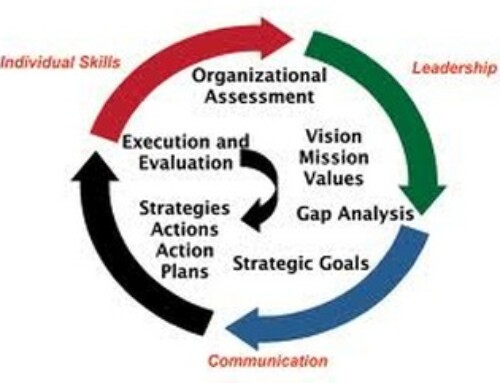 Have you ever noticed how the people you are closest too, in personal and business life, are the ones often most resistant to letting you excel, especially if that involves you breaking new ground? That is, they are resistant to you changing in ways that threaten the way they see you and/or the business you work together in every day.
Have you ever noticed how the people you are closest too, in personal and business life, are the ones often most resistant to letting you excel, especially if that involves you breaking new ground? That is, they are resistant to you changing in ways that threaten the way they see you and/or the business you work together in every day.
In an earlier post, I made the comment that people aren’t resistant to change. What they are really resistant to, however, is losing control. That is probably pretty easy for us to accept when we think of ourselves but the dynamic I want to talk about today in terms of change is how our support group can do the same thing we do to ourselves. Our business associates, peers, family, and friends are often vested in keeping us just the way we are. The same principals apply and the reason is exactly the same. There is a subconscious fear of losing control. People like things exactly the way they are and behavior that threatens that picture they have of you takes them out of their comfort zone. In actuality, they fear how this might really impact them, even if they aren’t consciously thinking this.
One area most people can relate to that will help you grasp this concept is with your family when you were growing up. Our families are our number one support and control group in our early lives, which can be great but it can also be hugely restrictive. Did you ever have a time with your mother or father where you expressed a desire to do something that was not the picture they had for you? If you did, I’m sure you got at least some strong cautionary comments about that risky course of action. It’s natural, of course, but if you don’t recognize these controls as you go through life you may find yourself holding you back and becoming overly risk averse.
The concept of risk is really key here. There has never been and never will be anyone that has been a change leader in government, business, science or art that has not also developed a healthy acceptance of risk in the process. These people had all of the same types of cautionary comments from their support circles but somewhere along the line, they learned to move forward in spite of these warnings and apparent lack of support.
Jack Canfield, the author of “Chicken Soup For the Soul” says they were rejected over dozens and dozens of times by publishers when they tried to shop their book concept, but they just kept pushing forward because they believed so strongly in their idea and course it became an international bestseller and has spawned numerous other books on the same topic. When Thomas Edison was working on the light bulb he said each failed attempt was a “successful” identification of a method that wouldn’t work. There were thousands of these yet he kept moving forward until they found the right solution.
So the message here is to do some self analysis and think about how you may at times hold yourself back in business or in life, not because you truly believe you can’t do something but because you have let external judgment impact your decision making process too much. This doesn’t mean we shouldn’t listen to outside advice and seek feedback from those we trust but just remember that nothing great ever happened because of a committee. At some point, a leader moved things forward. They reviewed the facts, they listened to trusted counsel and they made a decision. They may have taken a risk, but if you look at it like Edison, even if it didn’t work perfectly the first time, they learned something that will ultimately help them be successful.
Business too can fall into this trap. Businesses can take on a group personality, one of being overly cautious to the point where it is hard to create forward momentum. Businesses in this mode try to protect a system, product or approach that previously brought them success. There is a sense of denial even when the tried and true approach is hitting a brick wall. Successful businesses innovate, they take risks and they re-invent themselves. They make mistakes, of course, but in the process of moving forward, making a mistake, adjusting and moving forward again it’s the old “two steps forward, one step back”. They make forward progress while the company that is in the “defensive” mode thinks they are treading water but in truth, they are slowly sinking.
At your next leadership meeting ask each other where you fall in this discussion. What is the personality of your company? Where do you sit in terms of risk and the willingness to innovate as a group and individually? Are you moving forward or treading water? Who are the innovative thinkers on your team? Who are the ones willing to take risk to make progress? Are there some that always see the glass half full? Do you have a good balance? Remember, there is no such thing as stasis, you are either moving forward or backward and this applies to us individually and to our businesses.
Go ahead, take a risk, innovate!




